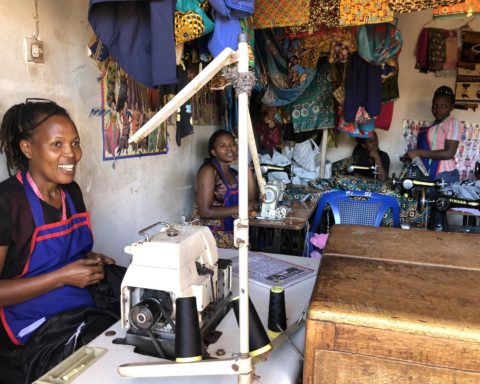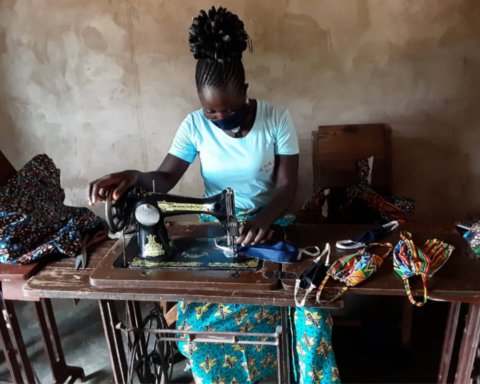The Najahna programme working to empower young Syrian refugees and other conflict-affected youth in Jordan has conducted a baseline study, providing preliminary insight and evidence on the context of the interventions. The purpose of such a study is to be able to have an initial picture of the situation before intervention, and to be able to evaluate the progress on the key indicators at mid- and endlines.
For the baseline, personal interviews were conducted in host communities in Amman, Irbid, Zarqa, and Mafraq, and the Syrian refugee camps in Azraq and Zaatri, with 1816 household heads and 1366 young people surveyed. Structured around the programme’s four flagship indicators, below are some key findings from the data and immediate implications for the programme.
Employability
Overall, the young people responding to the employability questionnaire achieved highest scores on aspects related to “Self-learning” and “Employment Protective Behaviours” followed by items on “Occupational Expertise” and “Professional Flexibility”, while scoring lowest on “Self-control”, “Job-seeking Behaviour”, and “Employment Risk”. There were no major differences between Syrians and non-Syrians, men and women, nor age groups, apart from slightly higher scores for non-Syrian women on “Employment Risk” and “Job-Seeking Behaviour”.

Employment
Employment was measured both according to Plan International’s method, looking at people employed within the last six months and including both active (e.g. employed, job-seekers) and inactive (e.g. students, individuals not wanting to work) individuals in the denominator, as well as the method used by the International Labour Organisation (ILO), focusing on employment within the last seven days and including only active people in the denominator.

By Plan’s measure, the employment rate was higher among non-Syrians than Syrians (27.1% and 19.1% respectively). At 46% for non-Syrian males and 34% for Syrian males, it was also considerably higher among males than females, with 8% employment rate for non-Syrian and 5% for Syrian women. Statistically and substantially significant differences also existed between Syrian males in the host communities and refugee camps, with the employment rate being 13% higher among the former.

The findings using the ILO measure had the same general direction, with unemployment 16% higher among Syrians than non-Syrians (66% and 40% resectively). Unemployment was also considerably higher among women compared to men, and somewhat elevated for the age group 15-25 year-olds compared to the average.
Attitudes towards gender roles
For the young people as well as their parents, the surveyed males and respondents from the refugee camps reported more traditional attitudes towards gender roles compared to the female respondents and the people from the host communities. Non-Syrian parents as well as non-Syrian young women held less traditional attitudes than the Syrian respondents from the two groups. Comparing young people’s attitudes to their parents’ attitudes yielded interesting results. Young women had less traditional views than mothers, particularly Non-Syrians and Syrians in host communities. In contrast, male parents had slightly less traditional views than young men, particularly among Syrians in the camps.

School attendance
School attendance was measured both directly for those young people participating in individual interviews, as well as indirectly through the household surveys. Overall, school attendance was very high for children of primary schooling age, and considerably lower for older children. This is also reflected in the findings from the directly surveyed young people, with 71% of the respondents aged 15-17, and only 8% of those aged 22-25, attending school.

Across all age groups, attendance was considerably higher among non-Syrians than Syrians, with more than 40% of the Syrians age 16-17 dropping out of school. While differences between Syrians living in host communities and camps were very small, the gap between the genders was sizeable: nearly 50% of the Syrian men in the age group 16-17 do not attend school, compared to less than 40% of the young Syrian women of the same age.
Implications
These preliminary results provide the Najahna Consortium with excellent insights into where and how our efforts need to be channeled and concentrated with each group.
The simultaneously high rates for employability and unemployment indicate a clear gap between employable young people and employers and employment opportunities. As is clear from the survey, both unemployment and school drop out rates are higher for Syrians than non-Syrians, which could denote a relationship between the two. While non-Syrian young women have the highest rates of school attendance, their parents and young men in their households and communities hold more traditional views of gender roles than any other category in the population. It is plausible that such views are affecting non-Syrian women’s ability to participate in the labor force despite being relatively employable.
Want to know more? Find the complete baseline brief below:






